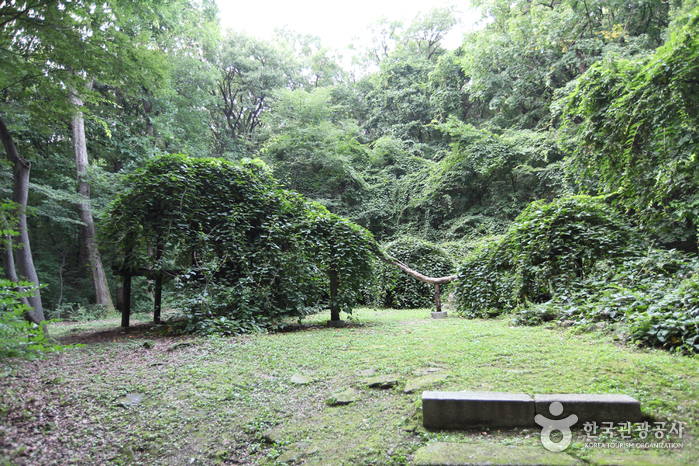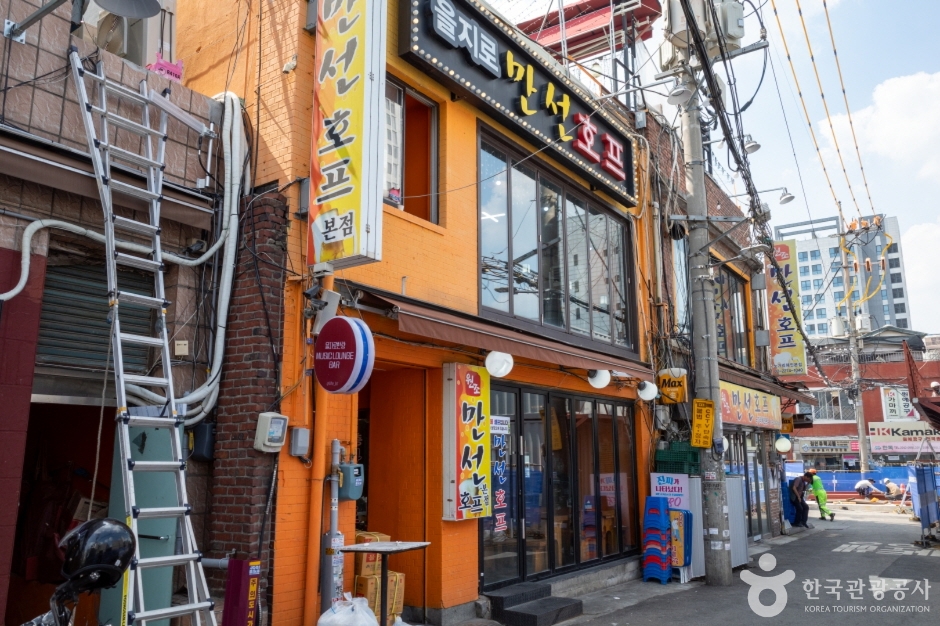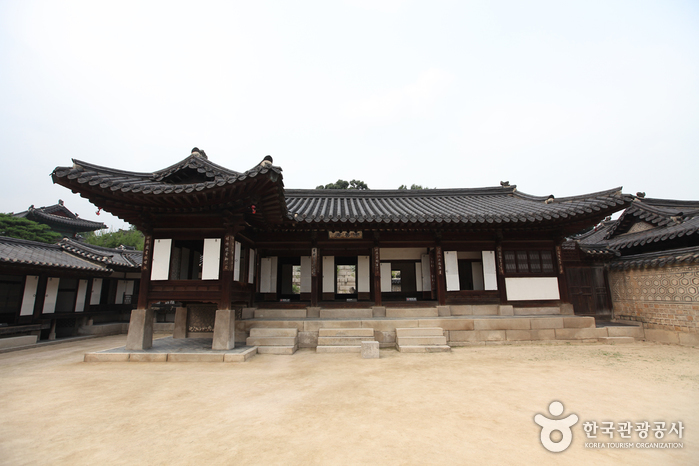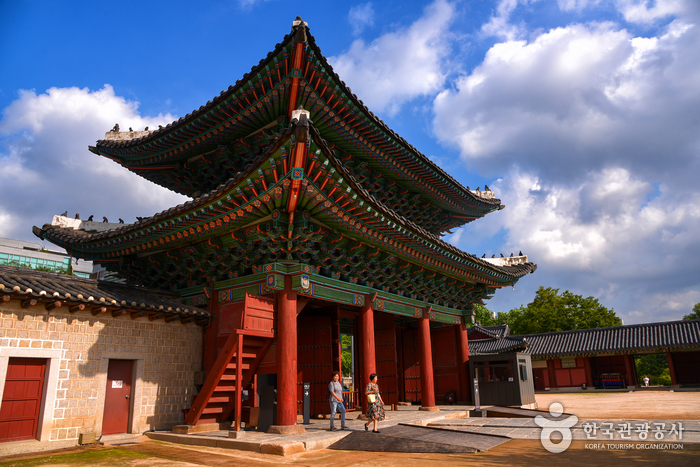Runners Club - Ewha Womans Univ. Branch [Tax Refund Shop] (러너스클럽 이대)
2.7Km 2024-04-23
#103, 160, Sinchon-ro, Mapo-gu, Seoul
-
Daraenamu Tree in Changdeokgung Palace (창덕궁 다래나무)
2.7Km 2025-01-13
99, Yulgok-ro, Jongno-gu, Seoul
+82-2-3668-2300
Daraenamu Tree in Changdeokgung Palace is estimated to be 600 years old, meaning it had likely been planted before the palace was built. The tree stands 19m in x_height, and has six separate trunks sprawling in all directions. It is the biggest and the oldest in Korea. It is designated and protected as a National Natural Monument.
Euljiro Nogari Alley (을지로 노가리골목)
2.7Km 2024-10-29
129, Eulji-ro, Jung-gu, Seoul
+82-2-1330
The alley that connects from Euljiro 3(sam)-ga Station, Exit 4 is full of people eating dried young pollack and drinking beers at tables along the street every night. Under the bright lamp lights, plastic tables filled with customers can be seen. The first Nogari pub, Eulji OB Bear, opened in November 1980 to form what is now the Euljiro Nogari Alley. Euljiro also has the largest Printing Alley in the nation, providing printing for almost all books and printed materials across the country. The shift workers would stop by the pub for dried young pollack and cold beer before heading home after work, leading to more restaurants opening nearby until the alley was formed. In the beginning dried young pollack was cooked over a briquet fire and served with red pepper paste, but now, the alley is full of pubs and restaurants serving various types of food, but nothing beats nogari and cold draft beer.
Nakseonjae Hall (낙선재)
2.7Km 2021-09-30
99, Yulgok-ro, Jongno-gu, Seoul
+82-2-2148-1822
Located inside Changdeokgung Palace, Nakseonjae Hall is a one-story structure built in ikgong style (bird wing-shaped eaves placed on top of the pillars) with a hip tiled and gable roof. It has 6 kan in the front and 2 kan (traditional unit of measurement of the space between pillars) to the sides. It originally belonged to the nearby Changgyeonggung Palace, but came to be considered a part of Changdeokgung Palace in more recent years.
The hall was constructed in 1846 (12th year of King Heonjong’s reign) and it is collectively called Nakseonjae together with the adjacent Seokbokheon Hall and Sugangjae Hall.
Behind the building is a flower garden made of stacked large stones. The chimney, the flowers, and the oddly shaped stones harmoniously blend into one another to create an outstanding landscape gardening.
Changgyeonggung Palace Honghwamun Gate (창경궁 홍화문)
2.7Km 2021-05-27
99, Yulgok-ro, Jongno-gu, Seoul
+82-2-762-4868
Honghwamun Gate is the main gate of Changgyeonggung Palace. It has three opening gates in the front and two to the side with a sophisticated locking mechanism.
![Runners Club - Ewha Womans Univ. Branch [Tax Refund Shop] (러너스클럽 이대)](http://tong.visitkorea.or.kr/cms/resource/12/2889512_image2_1.jpg)




 English
English
 한국어
한국어 日本語
日本語 中文(简体)
中文(简体) Deutsch
Deutsch Français
Français Español
Español Русский
Русский